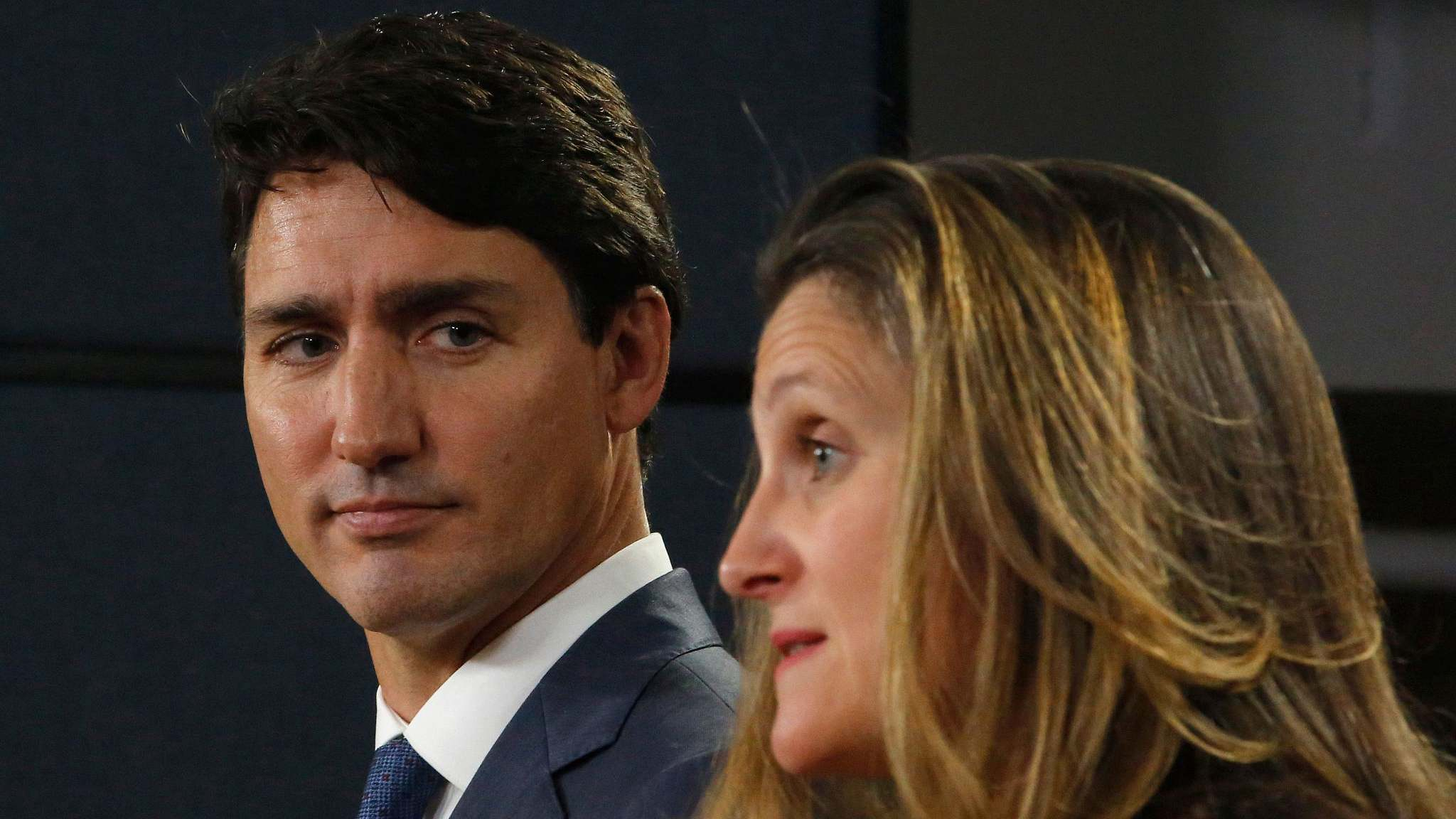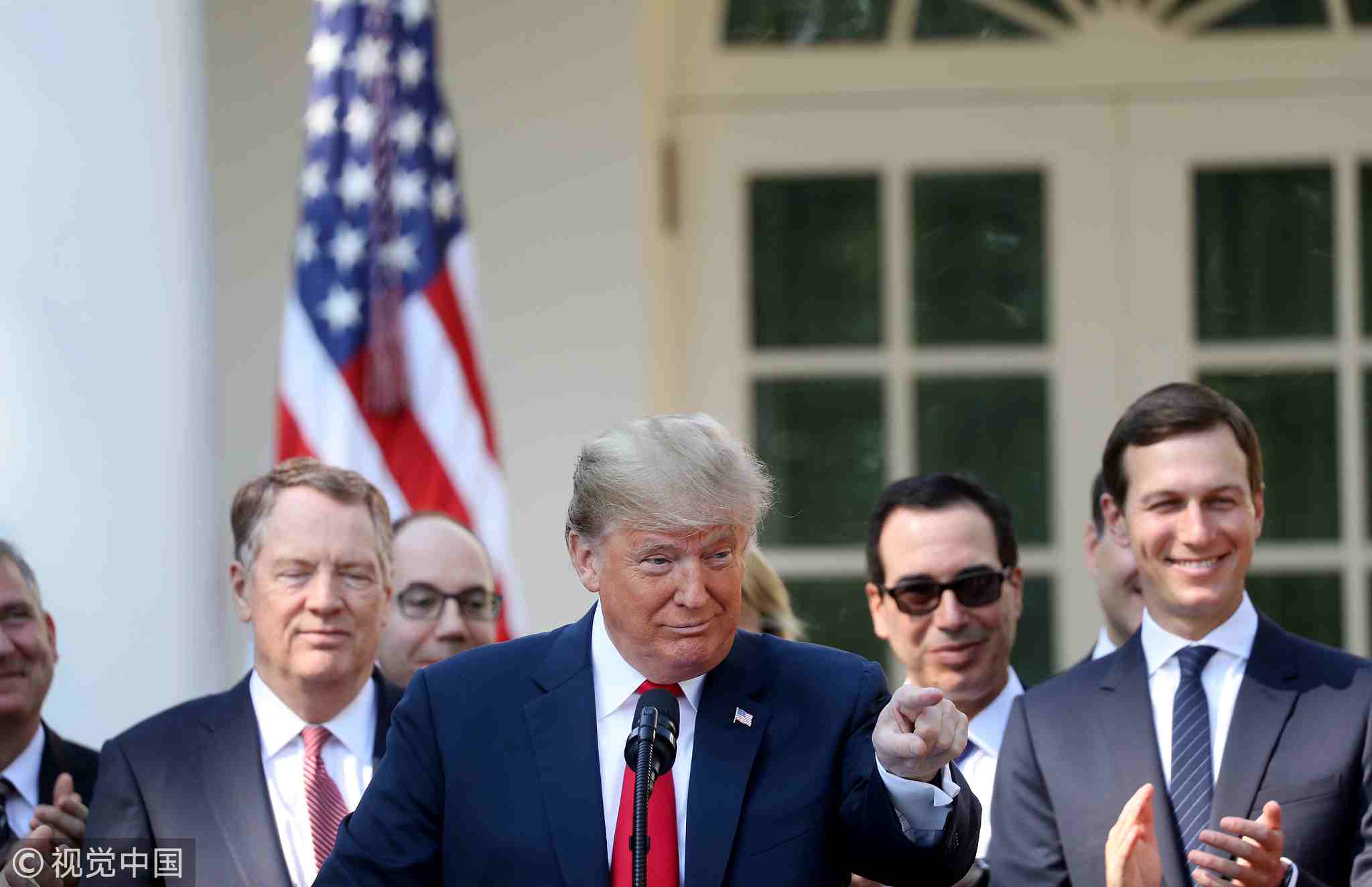
Opinions
09:21, 04-Oct-2018
Opinion: Does USMCA mean marginalization of the WTO?
Updated
09:12, 07-Oct-2018
Zhang Jianping and Du Jingjing

Editor's note: Zhang Jianping is the director of the Chinese Academy of International Trade and Economic Cooperation. Du Jingjing is an intern researcher at the same institution. The article reflects the authors' opinion, and not necessarily the views of CGTN.
The US, Canada and Mexico have reached consensus on a new trilateral trade agreement, the US-Mexico-Canada Agreement, or USMCA, to replace the North American Free Trade Agreement (NAFTA) signed in 1994. The agreement, which awaits congressional review and approval in the three countries, marks a significant milestone for the Trump administration.
Uncertainties ahead
The USMCA has been reached under pressure from Trump, who's threatened to impose punitive tariffs on its neighbors and floated the idea of building a wall on the border with Mexico to crack down on illegal immigration. Overall, the three parties reached agreement on sensitive industries and products after compromise.

US President Donald Trump delivers remarks on the United States-Mexico-Canada Agreement (USMCA) during a news conference in the Rose Garden of the White House in Washington DC, October 1, 2018. /VCG Photo
US President Donald Trump delivers remarks on the United States-Mexico-Canada Agreement (USMCA) during a news conference in the Rose Garden of the White House in Washington DC, October 1, 2018. /VCG Photo
Canada has agreed to allow US dairy farmers to access about 3.5 percent of its domestic dairy market and accepted stricter intellectual property protection regulations in the Comprehensive and Progressive Agreement for Trans-Pacific Partnership (CPTPP).
Meanwhile, the US has agreed to exempt 2.6 million vehicles imported from Canada from any future tariffs, up from the a two-million-unit quota.
The US also restricted Canada and Mexico from signing bilateral free trade agreement with non-market-economy countries.
Theoretically, the agreement should have been reached by trilateral negotiations. But the Trump administration opted for bilateral talks, especially since Trump has engaged in a war of words with Canadian leaders, which was mitigated by his son-in-law Jared Kushner.
According to the procedure, the US Congress will review the agreement in November, coinciding with the mid-term elections. If the review happens before the vote, the possibility of the agreement being ratified is relatively high. Otherwise, its approval will depend on whether the Republicans can control the House of Representatives. If the Democrats win, the chances might be slim.
For Canada, concerns of being ripped of autonomy have already been raised regarding the clause that restricts Canada from signing trade agreements with other countries. The issue has triggered heated debates publicly. In November, Mexico will also be holding its presidential election. It remains to be seen whether the approval on the new deal can be completed before Mexicans cast their ballots.
Does this mean WTO is marginalized?
After the USMCA was reached, there were concerns that developed countries are closely integrating their economies and that WTO will be marginalized and its trade rules replaced. To be fair, the US has been successful in recent bilateral trade negotiations – it signed an upgraded version of free trade agreement with Seoul; Jean-Claude Juncker, president of the European Commission, showed willingness to negotiate with the US on zero tariffs on goods; and Japan has agreed to enter into negotiations with Washington.
But to say that WTO would be marginalized is an overstatement. For one thing, the WTO encourages and advocates bilateral and multilateral free trade agreements. WTO is very supportive if members are willing to reach a higher level of trade liberalization and facilitation agreements under WTO's multilateral regulatory framework.

A logo is pictured outside the World Trade Organization (WTO) headquarters next to a red traffic light in Geneva, Switzerland, October 2, 2018. /VCG Photo
A logo is pictured outside the World Trade Organization (WTO) headquarters next to a red traffic light in Geneva, Switzerland, October 2, 2018. /VCG Photo
Economic globalization and regional economic integration have always been the two wheels that promote the development of the world economy. They are complementary and not contradictory.
Also, no matter how many trade agreements the US reaches, the scope and number of its related parties are very limited. By contrast, WTO has more than 160 members. Trade agreements reached between limited numbers will not replace the trade rules reached under the WTO framework.
Although trade between developed countries will eventually move towards integration, they still have to consider the interests of developing countries in the process of WTO reform.
Economic integration: A long way to go
Even Jean-Claude Juncker has shown willingness to negotiate with the US on zero tariffs on goods, which was strongly opposed by French President Emmanuel Macron.

French President Emmanuel Macron (L) and US President Donald Trump react as they hold a bilateral meeting on the sidelines of the 73rd United Nations General Assembly in New York, US, September 24, 2018./VCG Photo
French President Emmanuel Macron (L) and US President Donald Trump react as they hold a bilateral meeting on the sidelines of the 73rd United Nations General Assembly in New York, US, September 24, 2018./VCG Photo
The US and EU have had disputes over the Transatlantic Economic Partnership in the past. Trump's negotiation strategy of "carrot and stick" has really angered Macron, who is not willing to negotiate with a gun to his head.
Meanwhile, given that the European Commission needs agreement from its 28 member countries in its decision-making process, it is expected that US-EU goods trade negotiation would be difficult and could not be realized in the foreseeable future.
Under strong pressure from the US, Japan is going to negotiate with the US on trade agreement on goods (TAG), while Prime Minister Shinzo Abe's real hope is for the Trump administration to return to the CPTPP framework. Considering that the US and Japan are both developed economies and have similar and competitive industrial structure, the prospects of a trade agreement are still not clear.
(If you want to contribute and have a specific expertise, please contact us at opinions@cgtn.com)

SITEMAP
Copyright © 2018 CGTN. Beijing ICP prepared NO.16065310-3
Copyright © 2018 CGTN. Beijing ICP prepared NO.16065310-3